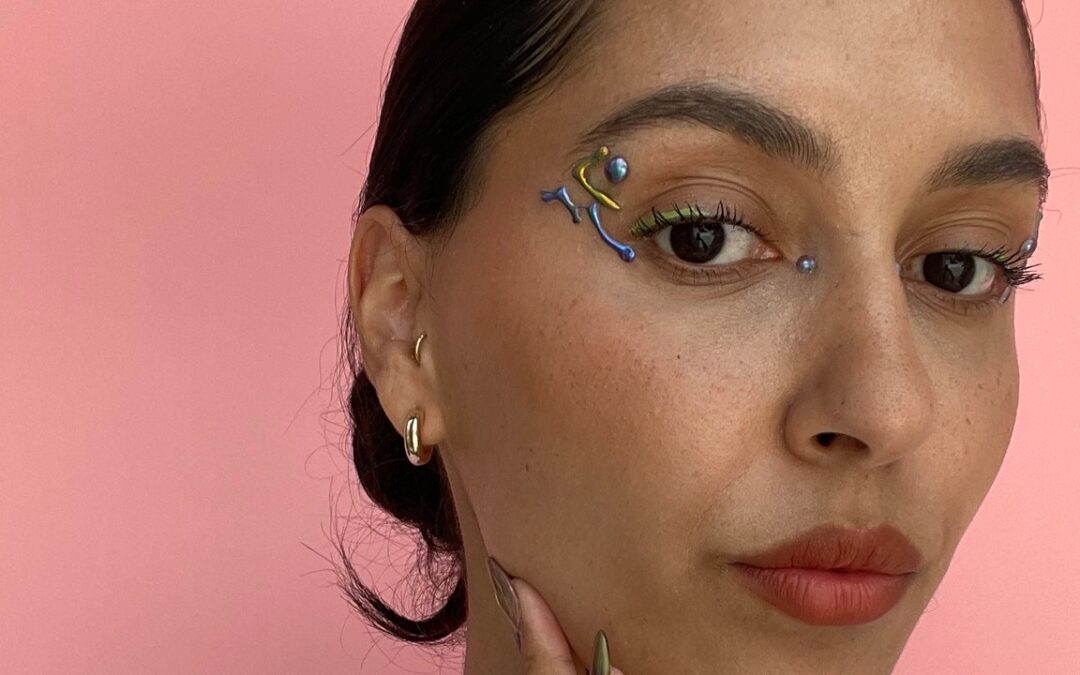Amid all the swirls, twirls, and polka-dotted graphic liners we have seen on the internet, beauty creators have also been leaning into 3D accessorizing. To create these impactful looks, tool kit must-haves have evolved beyond just an assortment of makeup brushes to include a range of pearls and sequins and stickers. The latest unexpected tool to come across our vanity is a hot glue gun.
While our eye makeup has certainly evolved since our last school assignment, hot glue guns are just the same. They are hot and sticky and shouldn’t be used anywhere near your face. Though the goopy glue is still primarily intended for DIY projects, TikTok creators have discovered another crafty use: Its shapable capabilities double as an excellent base for graphic makeup designs.
The idea is to squirt the glue into shapes — like zig-zags, squiggles, circles — on a stainless steel surface so the glue can peel off easily, and only once the glue is dry (after around five minutes), should the designs be used to frame your eyes.
Of course, glue is glue and it typically only comes in one bland color, so artists have gotten even more creative, adding chrome shadows on the dried pieces for a pop of color. Much like applying chrome nail powder or metallic eyeshadow, all you need is a makeup sponge to tap the shimmer directly onto the dried glue. From there, a dot of eyelash glue does the trick to make it stick to your face. You can also double down and apply the eyelash glue on both your design and directly on your skin where you plan to apply it for extra hold, says Salvadorian TikTok creator Vanessa Funes, also known as Cutcreaser to her followers.
For those with sensitive skin, Hadley King, MD, a board-certified dermatologist in New York City cautions that many possible ingredients from hot glue could be irritating. As for adhering it to your skin with lash glue, King reminds us that “lash glue was formulated for use on the skin, so it’s less likely to be formulated with ingredients that are likely to cause an irritant or allergic contact dermatitis, but of course, it’s still possible,” she says.

